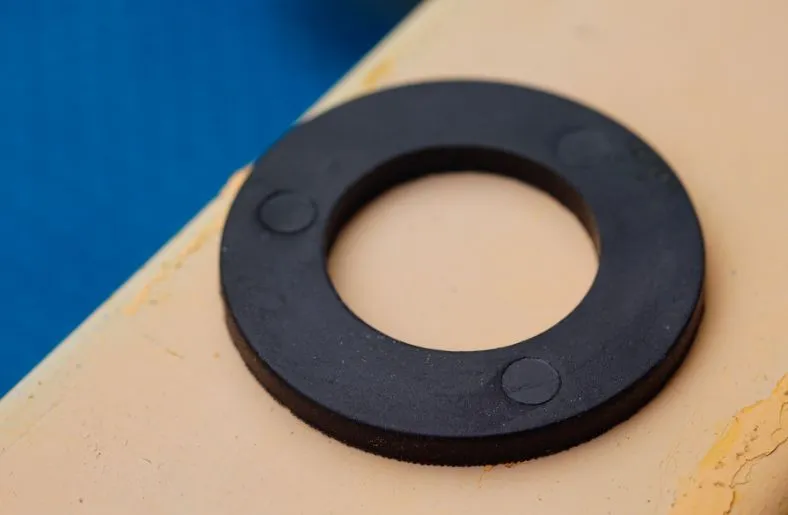Finding the right product can be a challenge when it comes to lubricating rubber surfaces. Rubber is a versatile material used in various applications, from automotive components to household items. Proper lubrication not only enhances performance but also prolongs the lifespan of rubber parts. One commonly considered lubricant is Vaseline, a household staple with various uses.
In this comprehensive guide, we’ll explore “Is Vaseline a good lubricant for rubber”, its advantages and limitations, and alternative lubrication options for different rubber applications.
Table of Contents
The Importance of Lubricating Rubber Surfaces
Understanding Rubber’s Unique Properties
Rubber is known for its elasticity and flexibility, making it a valuable material in various industries. However, its physical properties, such as friction and adhesion, can lead to challenges like wear and heat generation when rubber surfaces come into contact with each other or other materials. Proper lubrication can mitigate these issues and enhance the performance and durability of rubber components.
The Role of Lubrication in Maintaining Rubber
Lubrication serves multiple purposes when it comes to rubber:
- Reduction of Friction: Lubricants reduce the friction between rubber surfaces, preventing premature wear and extending the lifespan of rubber parts.
- Heat Dissipation: Lubricants help dissipate heat generated during friction, preventing overheating and potential damage.
- Seal Preservation: In applications where rubber seals are used, lubrication prevents them from drying out, cracking, or becoming brittle over time.
Vaseline: What Is It and How Does It Work?
Vaseline
Vaseline, a brand name for petroleum jelly, is a semi-solid mixture of hydrocarbons derived from crude oil. It is known for its versatility and is commonly used for skincare, wound healing, and as a general-purpose lubricant. Vaseline has a low melting point, which allows it to spread easily when applied to surfaces.
Mechanism of Lubrication with Vaseline
Vaseline works as a lubricant by forming a thin, slippery barrier between two surfaces, reducing friction and preventing direct contact. Its semi-solid nature makes it effective at adhering to surfaces, providing continuous lubrication even under moderate pressure.
Is Vaseline a Good Lubricating for Rubber?
Advantages of Using Vaseline on Rubber
Using Vaseline as a lubricant for rubber surfaces offers several advantages:
- Readily Available: Vaseline is widely available and can be found in most households and stores.
- Ease of Application: It is easy to apply Vaseline to rubber surfaces, and its semi-solid form allows for controlled and precise application.
- Cost-Effective: Vaseline is an affordable option for lubricating rubber parts, making it a budget-friendly choice.
Limitations and Considerations
While Vaseline can be a suitable lubricant for certain rubber applications, it may have limitations:
- Temperature Sensitivity: Vaseline’s effectiveness as a lubricant can vary with temperature. It may become less effective in extreme cold or high-temperature conditions.
- Cleanliness Concerns: Over time, dust and debris can adhere to Vaseline-coated rubber surfaces, potentially leading to increased friction.
- Compatibility: Vaseline may not be compatible with all types of rubber. It is essential to consider the specific rubber material and the application’s requirements.
Alternative Lubricants for Rubber Surfaces
Silicone-Based Lubricants
Silicone-based lubricants are popular choices for rubber surfaces. They offer excellent temperature resistance, making them suitable for both cold and hot environments. Silicone lubricants also repel water, making them effective in wet conditions. They are compatible with various rubber materials and provide long-lasting lubrication.
Mineral Oil
Mineral oil, a petroleum-derived lubricant, can be an option for lubricating rubber. While it lacks some of the advantages of silicone-based lubricants, it is readily available and cost-effective. It is often used in industrial applications and can provide adequate lubrication for rubber parts.
Rubber-Compatible Greases
In certain applications, specialized rubber-compatible greases may be the best choice. These greases are formulated to work specifically with rubber materials, ensuring compatibility and optimal lubrication. They can be highly effective in reducing friction and preventing wear in rubber components.
How to Apply Lubricants to Rubber Surfaces
Cleaning and Preparation
Before applying any lubricant to rubber surfaces, it’s crucial to clean and prepare the surfaces:
- Remove any dirt, dust, or old lubricant from the rubber using a soft cloth or a mild cleaning solution.
- Ensure that the rubber surface is dry and free of contaminants before proceeding.
Applying Lubricants
When applying lubricants to rubber surfaces:
- Apply a small amount of the chosen lubricant to the rubber.
- Spread the lubricant evenly across the surface, using a clean cloth or a brush if necessary.
- Ensure that the lubricant covers the entire area that requires lubrication.
Related Guide: White Lithium Grease for Skateboard Bearings (2023-2024)? Explained!
Reapplication and Maintenance
Regular maintenance is essential to keep rubber surfaces properly lubricated. Reapply the chosen lubricant as needed, considering factors such as temperature, usage frequency, and environmental conditions. Inspect the rubber components periodically for signs of wear or insufficient lubrication, and address any issues promptly.
FAQs
1. Does petroleum grease damage rubber?
As o rings are made from synthetic rubbers such as Neoprene, nitrile, and EPDM, you can use petroleum grease to perfectly lubricate the o ring. However, knowing if the o ring is made from ordinary natural rubber or synthetic rubber is where the problem lies, as petroleum will degrade natural rubber.
2. Is Vaseline as good as silicone grease?
If elevated temperatures are involved then silicone grease could be the better choice as it tends to have better high-temperature capabilities, If lubricity is more important then petroleum jelly may be the better choice as it may have better boundary lubrication capabilities than silicone grease.
3. Does Vaseline degrade rubber?
Vaseline, is a petroleum derivative. As mentioned above, hydrocarbons attack rubber. If you coat rubber gaskets with petroleum jelly to preserve them, you will get the opposite effect. After a few months, the rubber will become porous and you will need to change all your joints.
4. What is the best lubricant for plastic and rubber?
Silicone greases, for example, are lubricants that blend well with this material, increasing the life span of components and significantly improving their performance. A silicone grease can be considered the perfect plastic lubricant, as it tends to be inert towards plastics and elastomers.
Conclusion
Lubricating rubber surfaces is vital for maintaining optimal performance and extending the lifespan of rubber components. Is Vaseline a good lubricant for rubber? While Vaseline can serve as a budget-friendly and readily available lubricant for certain applications, it may not be the best choice for all situations due to its temperature sensitivity and cleanliness concerns.
When selecting a lubricant for rubber, consider the specific requirements of your application. Silicone-based lubricants offer excellent temperature resistance and water repellency, while rubber-compatible greases are tailored for compatibility and optimal performance. By understanding the unique properties of different lubricants and their suitability for your rubber components, you can make informed choices that ensure smooth operation and longevity.
Whether you’re lubricating automotive seals or household rubber gaskets, the right lubrication can make all the difference in maintaining the flexibility and effectiveness of rubber parts.

